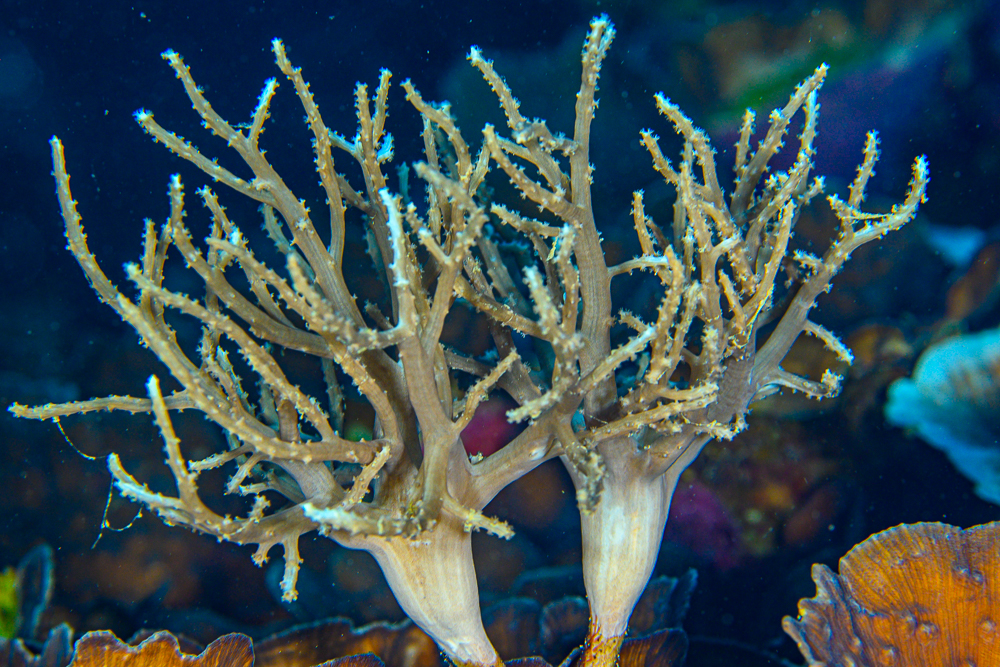
Competition among corals can be quite challenging, and I’m always astonished by the resources some corals can find to get an advantage over other corals. While diving at my favorite Rose Coral dive spot in North Sulawesi, Indonesia, a certain type of coral stood out and grabbed my attention, and it wasn’t a hard coral!
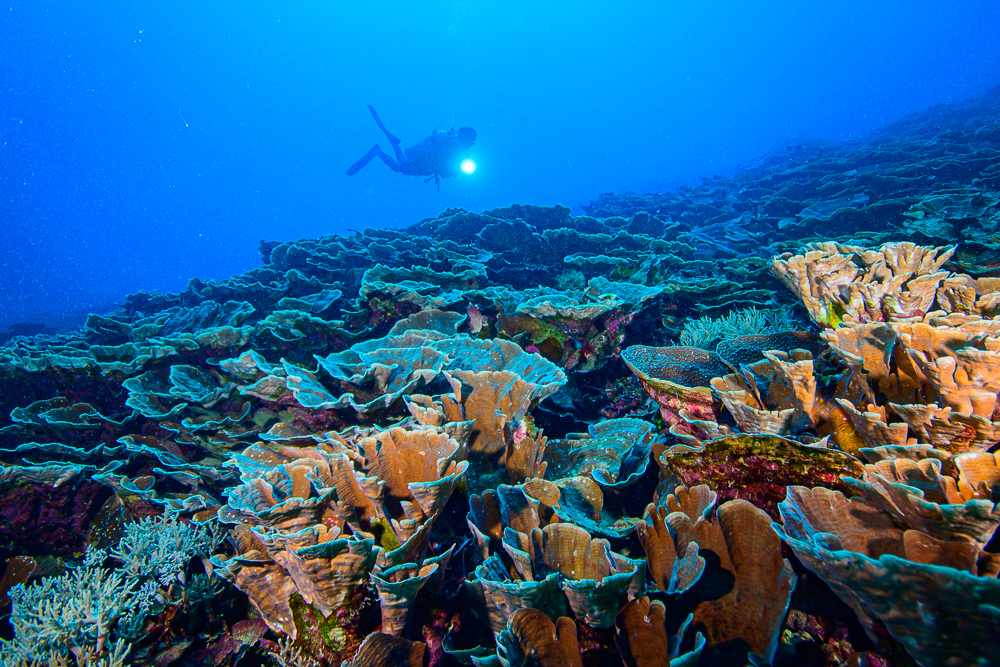
Sclerophytum, a former Sinularia:
The recent genetically-based taxonomic revision of the Octocorallia moved all the branching Sinularia into a new genus: Sclerophytum, to which this quite impressive coral belongs. It has been placed in the Sarcophytidae family together with Sarcophyton spp. and Lobophytum spp., known otherwise as the leather coral family.
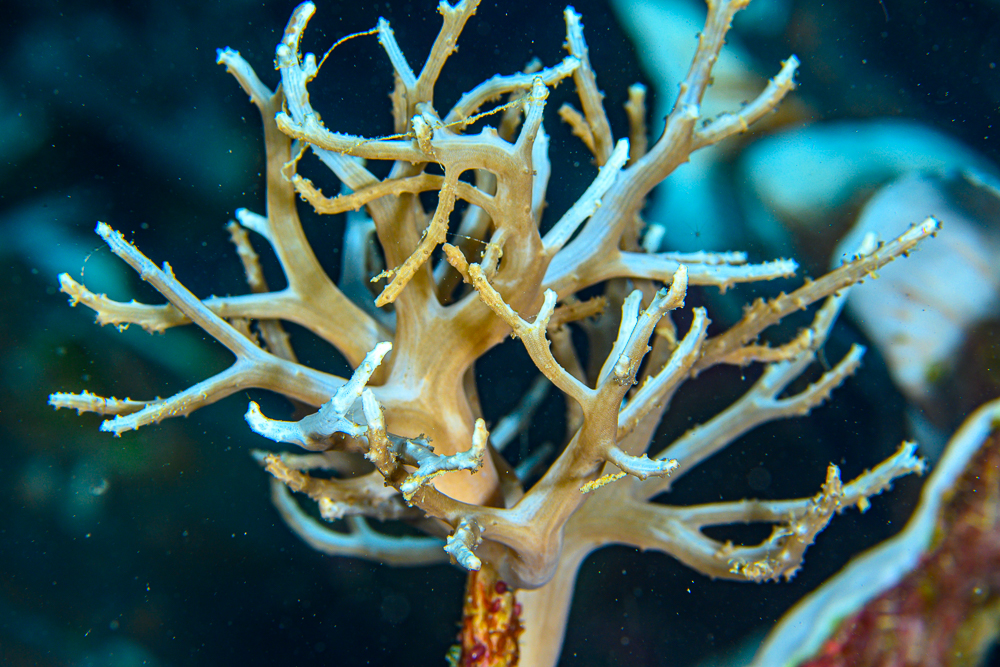
While Sclerophytum (ex Sinularia) are quite similar in their leathery appearance and texture, they are fundamentally different in a key aspect. Sclerophytum have retractile, monomorphic polyps. They do not possess siphonozooid polyps (polyps that intake water and circulate it within the colony) and only have autozooid polyps (classic feeding polyps). The related Sarcophyton and Lobophytum corals possess both types of polyps.
Reef-Building Sclerophytum:
Another distinct characteristic of Sclerophytum is that it produces a large and dense number of large-size sclerites, especially in its base. These sclerites end up fusing and mineralizing together to form solid a calcium carbonate stone, known as spiculite. As a result of all this calcification, Sclerophytum (ex-Sinularia) is sometimes classified as one of the reef-building soft corals.
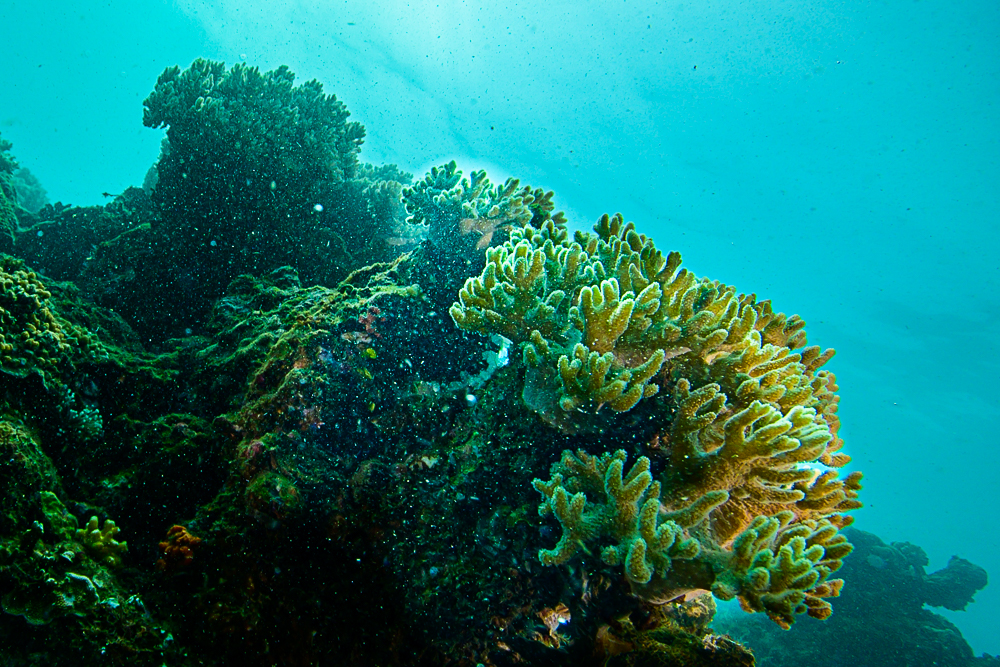
Indeed, Sclerophytum produces its own calcium carbonate stem, and the living coral is often only the terminal ‘bud’. This makes them very special among the soft coral family, and thus also very different from other Sarcophytidae members.
Some Sclerophytum took it to the next level:
In that particular sheltered, turbid, hard-coral dominated location, some Sclerophytum have taken their stem building to the next level. They have produced insanely long and thin calcium carbonate stems that allow them to stick out of and above the plating hard coral cover and survive in this very particular environment.
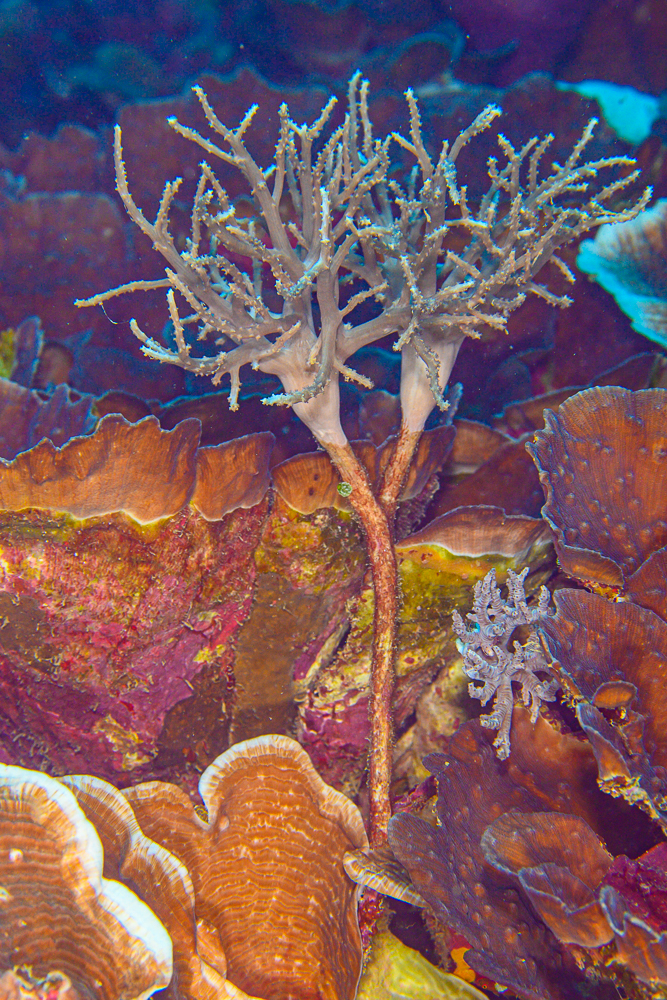
This strategy certainly gives them an advantage. They risde above the hard corals, which try very hard to dominate them and cut them off from sunlight.
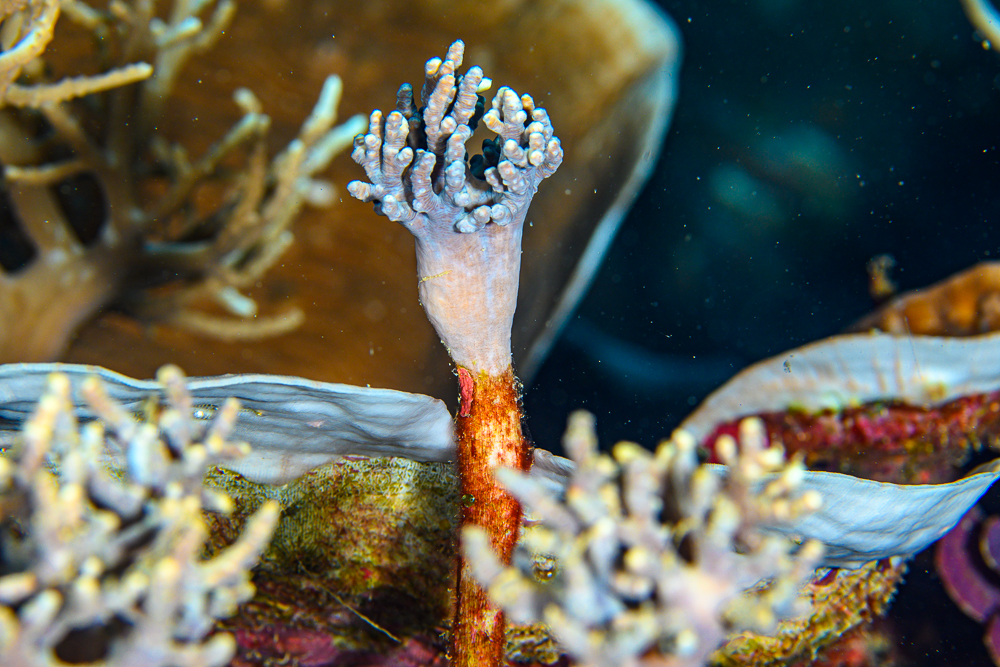
In addition to being lofted above their hard coral competitors, these soft corals end up just above them in the water column. There, they benefit from the turbulences in the water flow created by the hard coral cover which slows down the water current, and thus creates the perfect feeding sweet-spot.
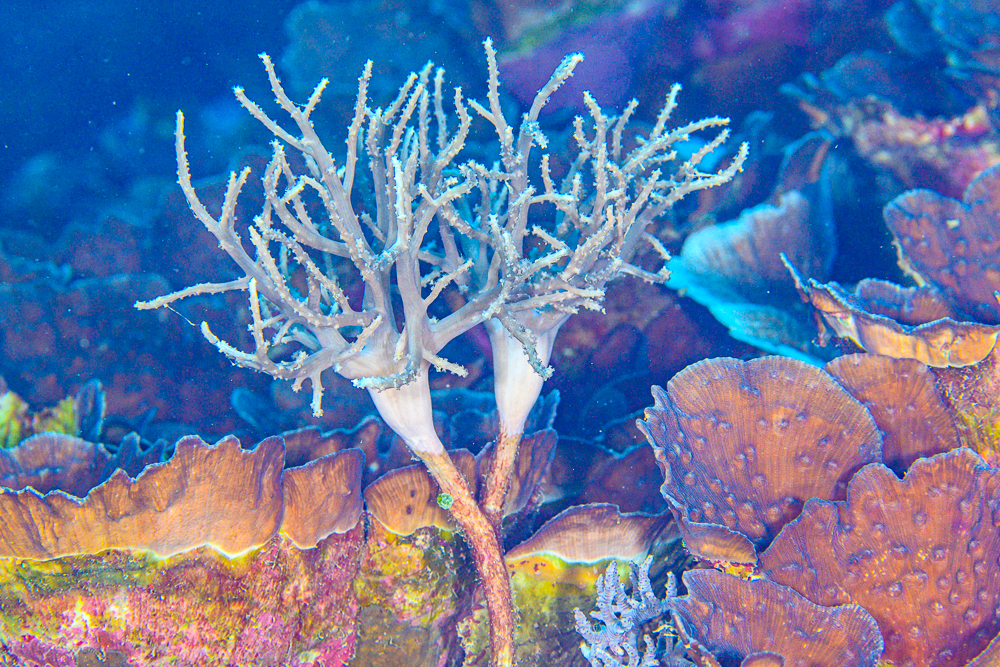
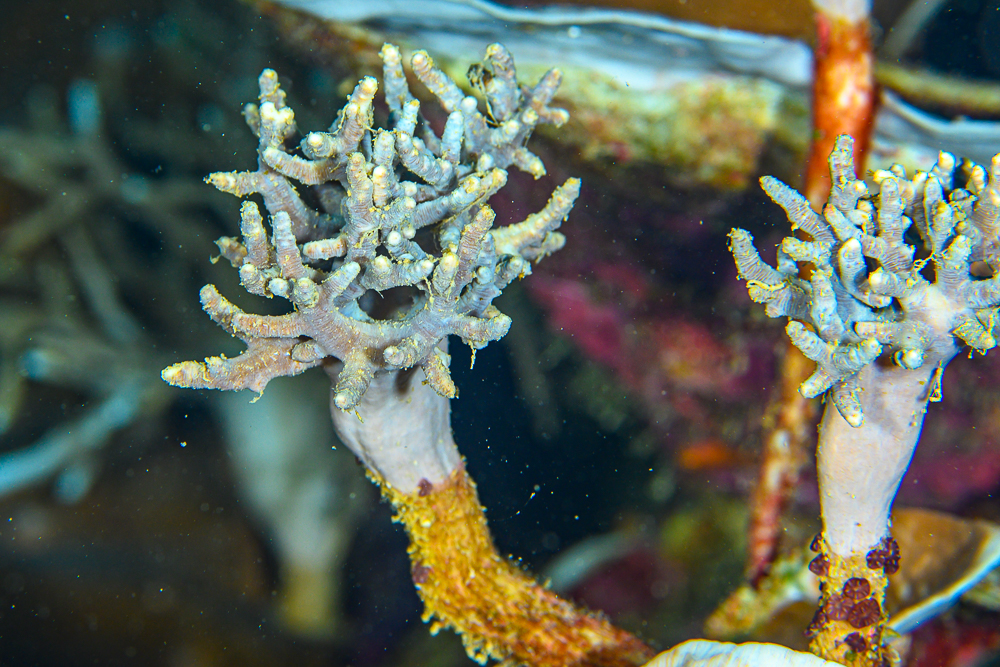
Strategies that corals deploy to survive and compete in dense coral beds are fascinating. And every time we dive this particular spot, we always see something new and interesting.




